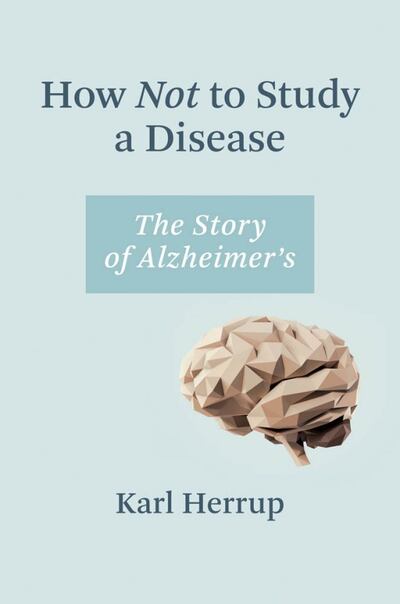
Causes of Alzheimer’s disease are much debated and are increasingly the subject of research at academic institutes and pharmaceutical corporations the world over. A new book, How Not to Study a Disease: The Story of Alzheimer’s, urges research to take up a new direction and to treat past investigations with caution.
Author Karl Herrup, who is professor of neurobiology at the Alzheimer's Disease Research Centre at the University of Pittsburgh School of Medicine, opposes the traditional view that the so-called amyloid cascade hypothesis – the build-up of plaques in the brain – is sufficient to explain and understand the disease. Throughout the book he offers a history of past failures and points to a new direction on the journey to a cure. Irish Times science contributor Conor Purcell talked to him about the new book.
Why did you write this book and why now?
For quite a while now I’ve been frustrated with the way in which the field describes the biological mechanisms behind the development and progression of Alzheimer’s disease. I originally came to the science as a developmental biologist and the more I got involved over the years and learned about the main hypothesis explaining Alzheimer’s – the amyloid cascade hypothesis – the less it made sense to me.
So I realised I needed a public format to really lay out the case. It’s also not enough just to be negative about existing theories – I wanted the opportunity to lay out a positive, constructive theory about where the field could go. Then the more I thought about it, the more I was convinced not to just write for my colleagues – like in scientific review articles, for example – but I wanted to try and make the whole thing accessible to any interested person in a book.
What is the amyloid cascade hypothesis?
So the amyloid cascade hypothesis was actually a really thoughtful and creative hypothesis when it was first developed some decades ago. Historically, it began with the man for whom the disease is named. Alzheimer had this strong, I would say, philosophical instinct, that brain structure was a predictor of brain function. He proposed therefore that brain malfunction should be related to brain structure too, so if you found something wrong with brain structure that could explain symptoms. Essentially, it was his idea that the structural problem creates the functional problem.
Alzheimer had a case study of a female patient who had an aggressive form of dementia that began in her 50s, and who later died of her disease. He was able to get specimens of her brain after autopsy, so to be able to examine it, and he found these deposits, which he suggested were the root cause of this woman’s condition. These became known as plaques and have come to define Alzheimer’s disease.
So what is actually causing Alzheimer’s disease?
It’s complex, and I try to be fair in the book, stating that I do not think that the amyloid cascade hypothesis is totally irrelevant. So, let me first explain why we need alternative ideas. If a doctor takes a scan and sees a substantial amount of plaque in the brain, the risk of developing dementia is increased. So, that individual may be more likely to suffer from dementia within, say, the next five years, than if the brain were clear of plaques. But that risk, if you actually look at the numbers in the studies that have been done, while significant, is not substantial. So it’s not all about the plaques.
So other factors which I, and many other researchers, think are important contributing factors to Alzheimer’s include chronic brain inflammation, oxidation, and calcium homeostasis. These could all affect the brain without the build-up of plaques.
What about lifestyle and dietary causes of Alzheimer’s?
Aggressive control of blood pressure is something that appears to be quite effective in preventing the disease and this is related to exercise and diet. The first trials aiming to really pin down the link between the disease and lifestyle are ongoing, and the community is hoping to explore that area considerably. A Mediterranean diet, which I mention briefly in the book, certainly seems to help in terms of prevention.
I also talk about diabetes in the book, and certainly type two diabetes is a tremendous risk factor, which is based around lifestyle choices. I would say that in the near term, diet and exercise is where we should be focusing, because we’ll get the most bang for our buck. Meanwhile, in the laboratories, we will painstakingly untangle what is actually a very complicated biology.
Do we do enough as a society to promote lifestyle as prevention?
You know, it’s sad, but it’s almost like our medical profession is not geared up to do that, especially here in the Unites States. We go to a hospital, or to a physician, or emergency room, when we get sick, and we expect to be fixed. Then when we come out, we’re better, supposedly. So very few people want to hear that prevention is down to exercise and diet.

Just look at how long it took us to convince people to quit smoking. We didn’t do it by force in this country, and we certainly didn’t do it by making doctors tell patients to stop smoking. We did it by making rules that people had to follow, and financial incentives by taxing the crap out of tobacco products. We should be doing the same with many different types of food, especially processed food.
– Dr Conor Purcell is an independent journalist who writes about science, society and culture. He can be found on twitter @ConorPPurcell and some of his other articles at cppurcell.tumblr.com.







